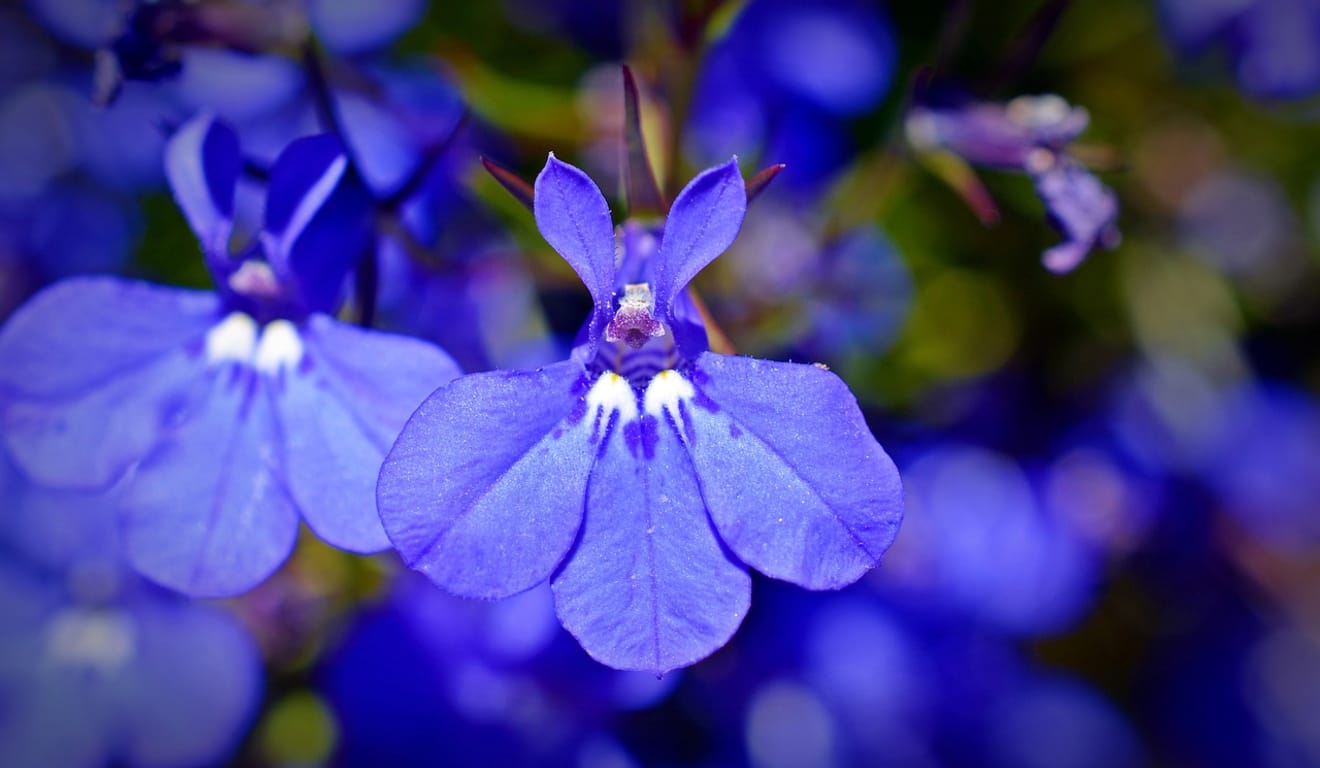Subject
- #High Society
- #Romance Fantasy
- #Flower Language
- #Villain
- #Lobelia
Created: 2024-02-07
Created: 2024-02-07 15:13
Hello! Today, I'd like to introduce a somewhat new flower. Are you familiar with the lobelia flower? Lobelia, in its dictionary definition, refers to a small flowering plant that blooms in blue, red, and white. As the name suggests, it's a purple flower with a bluish hue, right? Doesn't it seem like a flower you've seen somewhere in Korea? Let's learn about the familiar yet somewhat unfamiliar lobelia.

Source: Pixabay
What do you think the flower language of lobelia is? It's said to be **distrust, elegance, resentment, malice, and the beginning of a crisis**. It's a shame that such a beautiful flower has such negative flower language.
Apparently, there's a theory that this negative connotation stems from a custom during the Victorian era where socialites would subtly send wreaths adorned with these flowers to people they despised. The culture of the aristocrats back then is quite fascinating. It's novel to think that they would send flowers to someone they were trying to ignore.
Perhaps because of its unfavorable flower language, it seems that in cultural works, this name is often incorporated into the names of characters with unpleasant personalities. For instance, in the widely known movie, "The Lord of the Rings," Bilbo's unpleasant relative is named Lobelia Sackville-Baggins. It's also a common name for villains in romance fantasy novels.
Also, this flower is said to be the birth flower for October 30th. Perhaps those born on October 30th might want to keep the lobelia flower in mind?
Lobelia is an annual herb belonging to the Campanulaceae family and the Lobelia genus. Its origin is South Africa, where it is considered a perennial. Its scientific name is Lobelia erinus. The flower colors include white, blue, purple, and pink. It grows to a height of 15-20cm, with alternate leaves that lack petioles and have an ovate or spatulate shape. The edges have slightly serrated margins.
It is found distributed across the globe but primarily in tropical and temperate regions, with some species inhabiting cooler temperate zones. If sown in autumn, it blooms in April, and if sown in March, it flowers from June to July.
This plant contains the alkaloid lobeline, which has a respiratory stimulant effect and is used as a medicinal herb for conditions like whooping cough, asthma, and chronic bronchitis. However, as lobeline is an alkaloid, it has toxicity.
In addition, it's interesting to note that Lobelia inflata is also sometimes referred to as lobelia. Lobelia inflata is also known as Indian tobacco and is native to North America, reaching a height of 1 meter. Its leaves are ovate with serrated edges. Flower-like blossoms form in a spike-like inflorescence. In this aspect, it shares similarities with lobelia.
Its fruit is oval-shaped. At one point, Native Americans used the plant medicinally when the fruit matured. However, it is now recognized as a poisonous plant. It contains 0.4% alkaloids and is a valuable plant used as a raw material for lobeline hydrochloride.

Source: Wikipedia, Lobelia inflata
Lobelia can also be used to create perfumes due to its pleasant fragrance. We've explored lobelia in detail so far. What did you think? Hopefully, you feel a bit closer to understanding lobelia. It might be nice to think about lobelia the next time you're out walking. This concludes our discussion for today. Thank you!
Comments0